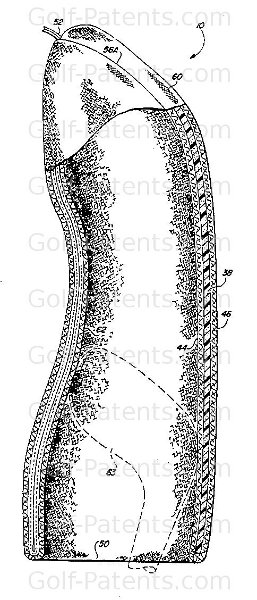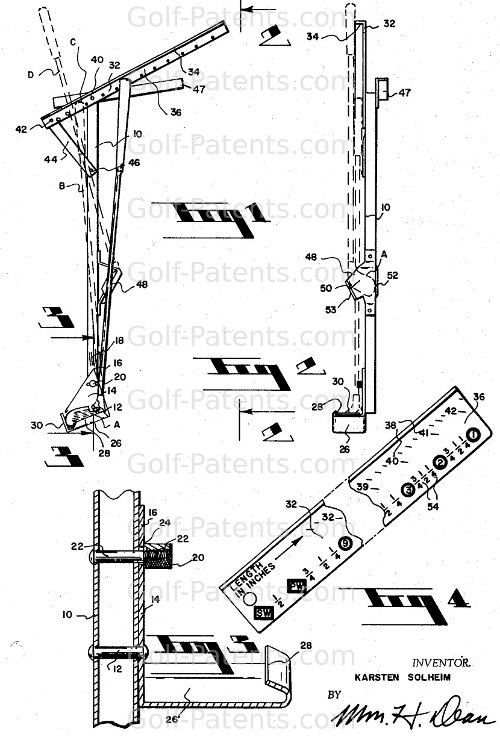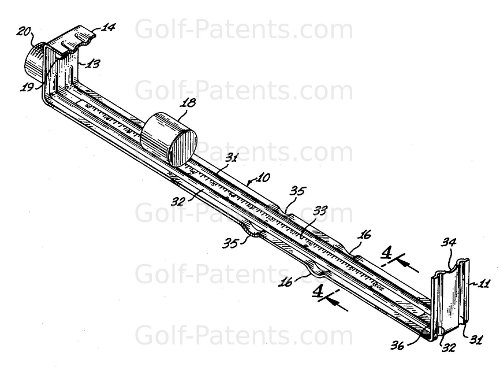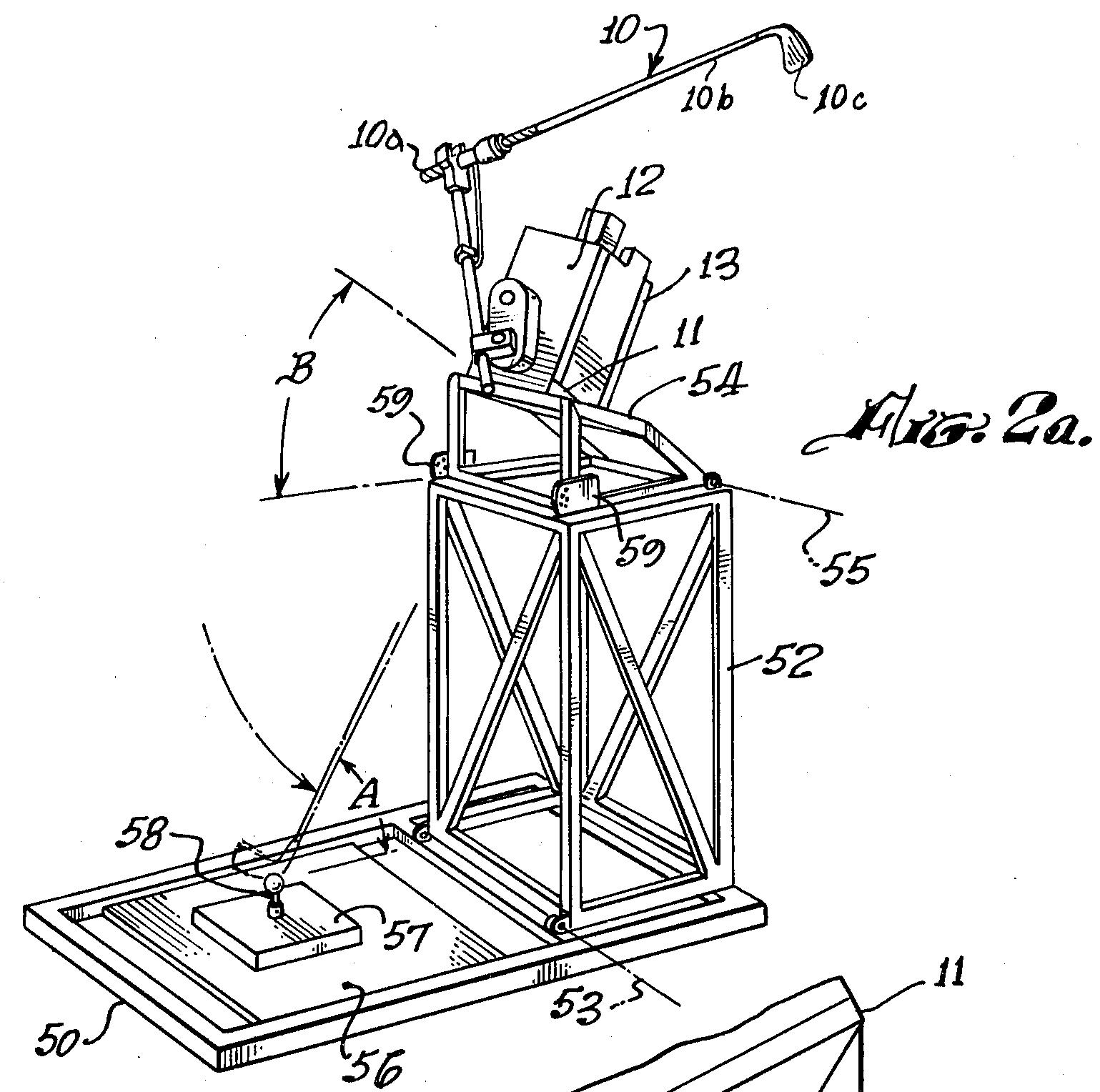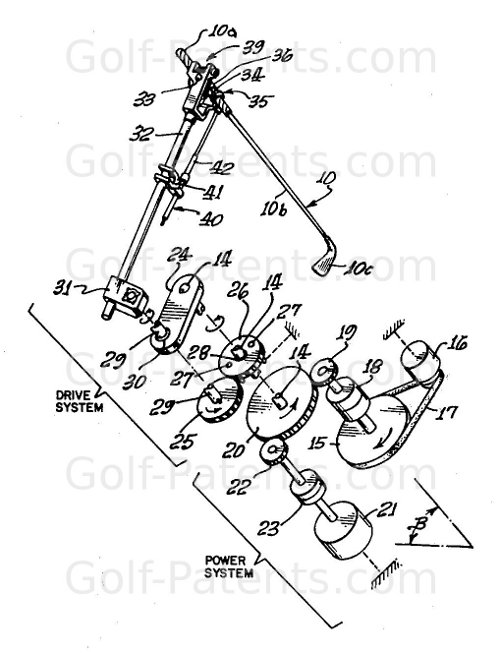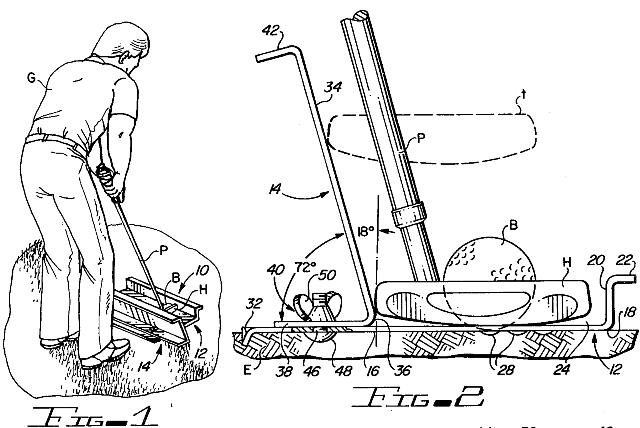Day 2 of “The Week of Karsten” – His Golf Tool Patents
Yesterday you learned about Karsten’s non-golf related patents. Today let’s look at his inventions that are golf related, but aren’t the type of inventions that you would typically associate with PING. You know, some behind the scenes tools.
The first of his patents in this category is USPN 3293762 titled “Gauge and Measuring Device for Golf Clubs,” specifically for measuring the length, lie, and loft of clubs, which issued in 1966. The patent explains “it has been apparent that the golf profession and golf players at large have not been provided with a suitable standard for measuring the lie and loft angles of golf clubs and, further, the art has lacked a very simple and readily and easily useful tool or device for such purposes.” A few drawings of the device are shown below.
Next, in 1971 a patent issued to Karsten titled “Swing-Weight and Static Weight Balance for Golf Clubs.” The patent, USPN 3577771, describes the invention as:
Apparatus for measuring swing weight and static weight of golf clubs adapted to employ a table or counter top as a base is provided by an elongated rigid member having: a first upright section at one end thereof to support a golf club shaft; a second upright section at the other end to hold the grip end of the club; and two longitudinally displaced rockers functioning as fulcrums between the two end sections. The position of a balance weight is adjusted to balance the rigid member on one rocker with a golf club held by the upright sections with the shaft supported by the first upright section and extending away from the second upright section. For measuring the swing weight of clubs without grips, there is provision for adjusting the position of each club so held relative to the upright sections depending on the length of its shaft. For measuring static weight, the club is held with its shaft transverse the elongated rigid member at the one end thereof and balance is obtained on the second rocker by adjusting the position of the balance weight. Swing weight or static weight is then read on a scale from the position of the balance weight, depending upon which rocker is used.
By the mid-seventies it seems that Karsten recognized the need for a reliable way to test golf clubs and golf balls, and at the end of 1977 he was granted a patent for a “Golf Club Swinging Apparatus.” The patent, USPN 4062222, describes the invention as:
A golf-club and golf-ball testing apparatus, having a crank arm driven by a main drive shaft, drives a club swinging arm through a secondary drive shaft supported by bearings on the end of the crank arm and turned by a planetary gear which meshes with teeth in a fixed gear concentric with the main drive shaft. The club swinging arm is connected to the secondary drive shaft by a short block, and the club is connected to the end of the swinging arm by a gripping member that is caused to rotate from an adjustable initial position so that the shaft is rolled through about 180 degrees during a full swing. The short block is coupled to the secondary drive shaft by resilient material to absorb shocks between the swinging arm and the crank arm.
Next, in 1984 Karsten was granted USPN 4453717 titled “Practice Putting Device,” illustrating that he was a study of the game and not just an engineer cranking out clubs. There have been many putting aids developed since 1984 that build upon the premise of the ‘717 patent. The patent explains:
An apparatus for practicing golf putting strokes including a putting surface member for receiving a golf ball to be putted and a swing path defining member which extends angularly from the putting surface part and lies in a plane which defines a normal and desired putter swing path. The swing path defining part is laterally offset from the intended swing path of the putter to provide a person using the apparatus with a visual indication of a normal swing path to serve as a guide while making unfettered practice swings with the putter. The swing path defining member includes an unobstructed planar member and a flange which is mounted on the putting surface member and supports the unobstructed planar member at an angle of substantially 72.degree. with respect to the putting surface member.
Rounding out this category is USPN 4667716 titled “golf club head cover with detachable identification tag and method of making a golf club head cover,” which issued in 1987. The patent describes the invention as:
A golf club head cover is made in accordance with a method having a minimal number of steps from a single sheet of fabric-like material which provides both an outer covering and a liner and inherently forms the head cover which closely fits the head of a wood type golf club and has an especially configured constricted bore in the head cover. The head cover is also provided with a detachably mounted golf identification tag which simplifies manufacturing and supply inventories.
Neat stuff! Stay tuned, the upcoming posts will delve into the patents that reveal Karsten’s true genius, including posts covering his golf grip patents, a golf ball patent, patents on woods, iron patents, and, of course, putter patents.
Dave Dawsey – Becoming a Golf Technology Historian One Patent at a Time

